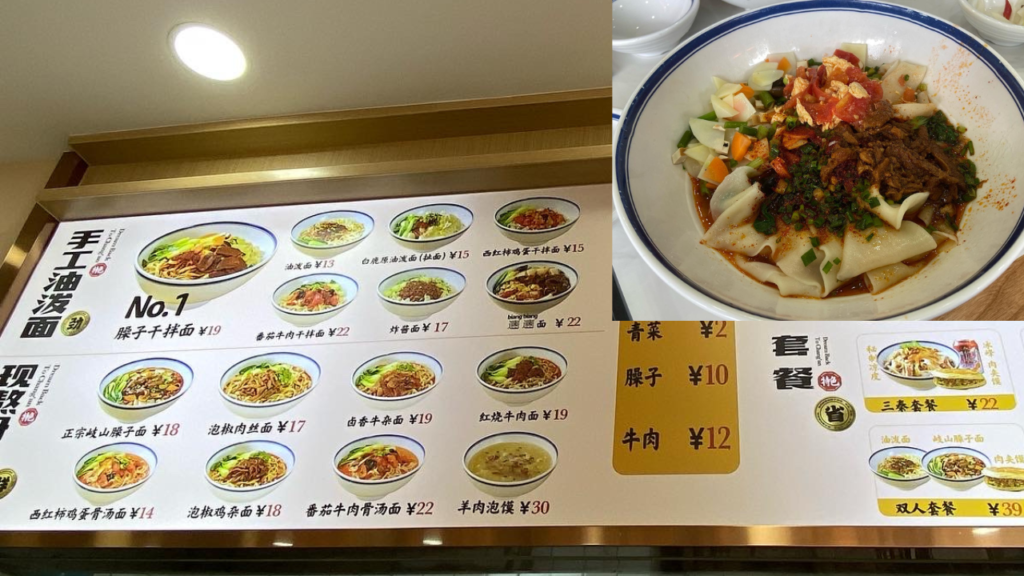This is inside the city of Suzhou, China. One of the cradles of Wu culture, this city has beautiful, and old streets of China. But my first exposure is the new city of Suzhou, wherein, skyscraper structures are revealed right before my very eyes.

Of course, who would not be enticed with eating the sumptuous bowl of Biang Biang noodles of China? This is one of the best noodles I have tasted in my entire journey, not just in China but to the rest of the world. The thin slice flat one meter cut Biang Biang noodles is a reflection of how intricate and enticing the culture of Chinese is.

This is my whole journey to Suzhou, China. I hope people will be able to view this video as it shows how beautiful the country is.
Suzhou City, China: A Blend of Tradition and Modernity
Suzhou, located in Jiangsu Province in eastern China, is a city steeped in history and culture, often referred to as the “Venice of the East” for its intricate network of canals. With a history dating back over 2,500 years, Suzhou is renowned for its classical gardens, silk production, and the harmonious blend of ancient charm and modern vibrancy. The city has become a symbol of China’s cultural richness and technological advancements, making it a captivating destination for tourists and an important hub for economic development.
A Historical and Cultural Gem
Suzhou’s rich history is reflected in its architecture, gardens, and ancient canals. The city’s classical gardens, recognized as UNESCO World Heritage Sites, are masterpieces of landscape design, featuring elegant pavilions, serene ponds, and meticulously arranged rocks and plants. Gardens like the Humble Administrator’s Garden and the Lingering Garden exemplify the artistry and philosophy of traditional Chinese garden design, offering a glimpse into the lifestyle and aesthetics of the Ming and Qing dynasties.
The city is also famous for its ancient water towns, such as Zhouzhuang and Tongli, where narrow cobblestone streets, stone bridges, and whitewashed houses provide a nostalgic view of traditional Chinese life. These towns retain their historical charm, attracting visitors who seek an authentic cultural experience.
Economic and Technological Progress
While Suzhou cherishes its cultural heritage, it has also embraced modernization and economic growth. The Suzhou Industrial Park (SIP), a joint venture with Singapore, has transformed the city into a major economic center in China. The SIP hosts numerous multinational corporations, fostering innovation and technological advancement. This blend of historical preservation and industrial growth demonstrates Suzhou’s ability to maintain its identity while adapting to the demands of the 21st century.
Suzhou is also a leader in silk production, a tradition that dates back thousands of years. The city’s silk industry, combined with its modern textile manufacturing, has cemented its reputation as a global center for high-quality silk products. The Suzhou Silk Museum offers visitors insights into the ancient art of silk-making and its cultural significance.
A Haven for Tourists
Tourism plays a vital role in Suzhou’s economy, attracting millions of domestic and international visitors each year. The Grand Canal, the longest man-made waterway in the world, runs through Suzhou, providing scenic boat rides that showcase the city’s picturesque canals and historic sites. Additionally, landmarks such as Tiger Hill, with its leaning Yunyan Pagoda, and Hanshan Temple, famous for its bell chimes, are must-visit attractions.
Suzhou is also known for its traditional crafts, including Suzhou embroidery, one of the most exquisite forms of needlework in China. Visitors can explore local markets and workshops to appreciate the intricate craftsmanship and purchase unique souvenirs.
Modern Lifestyle and Cuisine
Despite its historical significance, Suzhou offers a modern lifestyle with world-class infrastructure, shopping centers, and culinary delights. The city’s cuisine reflects the Jiangsu region’s tradition of light and flavorful dishes, with specialties such as sweet-and-sour Mandarin fish and Suzhou-style mooncakes.
In recent years, Suzhou has also become a hub for contemporary art and design, with museums and galleries showcasing both traditional and modern works. This creative energy further enhances Suzhou’s appeal as a city that bridges the old and the new.
Conclusion
Suzhou stands as a testament to China’s ability to harmonize tradition with modernity. Its historical landmarks and cultural heritage continue to captivate those who visit, while its economic and technological advancements showcase a forward-thinking vision. As a city of canals, gardens, and innovation, Suzhou offers a unique experience that celebrates both the past and the future, making it a shining jewel in China’s rich cultural landscape.

